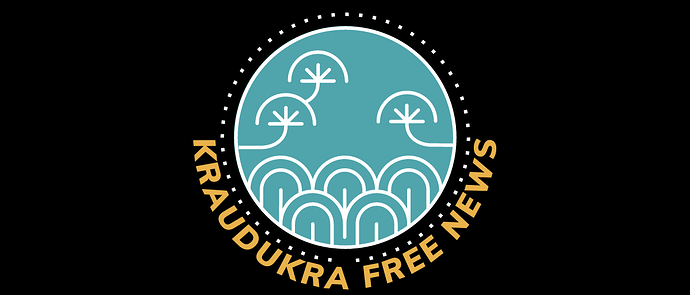High-Stakes Sabotage: Attack on Emeraldian Warship Threatens to Ignite Regional Conflict
A devastating attack on the Emeraldian 68,000 ton Battleship ERNS Jylland II at Omen Joint Naval Base in Krauanagaz has left 30 dead and heightened fears of a broader conflict in Southern Cordilia. The bombing, allegedly carried out by the militant group Red K, has sparked public outrage in Emerald and could derail any remaining hopes for peace in the region. With tensions at a boiling point and military forces mobilizing, the region stands on the brink of an all-out war that could engulf multiple nations.
Alkantara, Krauanagaz— Tensions in Southern Cordilia have reached a new high after a trio of devastating bombings at Omen Joint Naval Base in Southern Krauanagaz yesterday, leaving the region teetering on the cusp of all-out war. According to Emeraldian Royal Navy officials, three powerful explosive charges detonated aboard the Emeraldian flagship, ERNS Jylland II, killing the ship’s executive officer and 29 Emeraldian sailors, and seriously wounding the captain along with 51 others aboard the Emeraldian vessel. The attack comes amid a rapidly deteriorating security situation following weeks of rising violence in Mitallduk and escalating confrontations between Krauanagazan, Emeraldian, and Zuhlgani forces across the greater Cordilian Peninsula.
The attack occurred in broad daylight, with chaos erupting just hours after an initial lockdown of the base was reported. According to multiple intelligence sources, members of the militant group Red K disguised themselves as dockworkers during scheduled maintenance hours to infiltrate the heavily fortified facility. Once inside, they planted three explosive charges strategically placed on the ERNS Jylland II: one on the bridge wing, another on the amidships helicopter deck, and a third near Turret #4 at the stern according to preliminary findings from Krauanagaz’s Naval Criminal Investigative Service (NCIS).
The simultaneous detonation of these charges inflicted severe damage on the vessel. The explosion near the bridge wing severely wounded the ship’s captain, while the blast on the helicopter deck destroyed half of the bridge. The third charge damaged the turret, crippling a key defensive system. The ship’s Executive Officer was killed instantly. Eyewitnesses described scenes of chaos both aboard and on the pier, with smoke billowing from the ship and emergency crews scrambling to contain fires and evacuate the wounded.
The Emeraldian Royal Navy has not yet commented on the full extent of the damage, but initial reports suggest the ERNS Jylland II will require extensive repairs before it is operational again. Security across Krauanagaz has been heightened, and authorities are investigating how Red K militants could infiltrate one of the most secure naval facilities in the region.
Shortly after the lockdown at Omen JNB yesterday afternoon, the Governor of Kevpríg Province, Mitka Luavi, issued an emergency statement, warning of a “credible threat” to the Port of Alkantara. Authorities ordered the evacuation of nonessential personnel from the port while security forces conducted a sweep of the area. Heavily armed guards were deployed throughout Alkantara and its surroundings, and a temporary lockdown remains in place as a precautionary measure.
With no group immediately claiming responsibility, speculation is rife that the attack was part of a broader strategy by Red K to destabilize Southern Cordilia further. The group, known for its radical opposition to both Krauanagazan and Emeraldian influence in the region, has carried out several high-profile attacks in recent years but has not typically targeted foreign military assets. If confirmed, this represents a significant escalation in their tactics.
The attack on the ERNS Jylland II has sparked outrage in Emerald, with public sentiment rapidly hardening against both Red K and Zuhlgan. Analysts predict that the attack will have severe repercussions not only for Red K but also for broader regional diplomacy and stability.
The Emeraldian public, already on edge due to the volatile situation in Mitallduk and the ongoing conflict with Zuhlgani forces, is demanding retaliation. Emeraldian intelligence agencies are reportedly preparing to leak information related to Red K’s operations, funding sources, and potential ties to Zuhlgani sympathizers. This move could lead to further destabilization, as it would expose sensitive networks and trigger internal purges or retaliatory actions by Zuhlgani authorities if the assertions are palpable.
The attack has very likely shattered any remaining hopes of a diplomatic resolution between Emerald, Krauanagaz, and Zuhlgan. Diplomatic channels that were already strained by mutual distrust have been effectively severed, with both nations preparing for an escalation. The Starhawk Pact, a powerful military alliance led by Emerald, has reportedly begun mobilizing for more aggressive action, while Krauanagaz has announced they are moving to “defense condition two,” dangerously increasing the risk of a major conflict involving multiple nations.
With the potential for a wider war now a very real threat. Southern Cordilia stands as a powder keg, with Krauanagazan, Emeraldian, and Zuhlgani forces currently clashing in Mitallduk, and militant groups like Red K, the Purity Vanguard, and the Takaran People’s Army complicating any effort at a ceasefire. The attack at Omen Joint Naval Base could catalyze an all-out regional war, dragging neighboring countries and global powers into a protracted and devastating conflict.
The situation remains fluid, with both Krauanagaz and Emerald urgently reassessing their strategic positions. A spokesperson for the Krauanagazan government condemned the attack and pledged full cooperation with Emeraldian authorities in finding those responsible. However, with military assets now on high alert and political tensions at a fever pitch, the coming days could see rapid and unpredictable developments.
International observers have called for restraint, urging all parties to avoid further escalation. However, given the scale of the attack and the political fallout, a de-escalation seems increasingly unlikely. For now, Southern Cordilia stands at the edge of a wider and more dangerous conflict, with the world watching anxiously.



